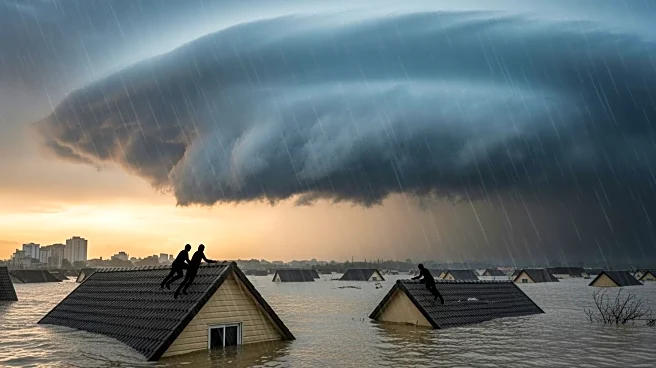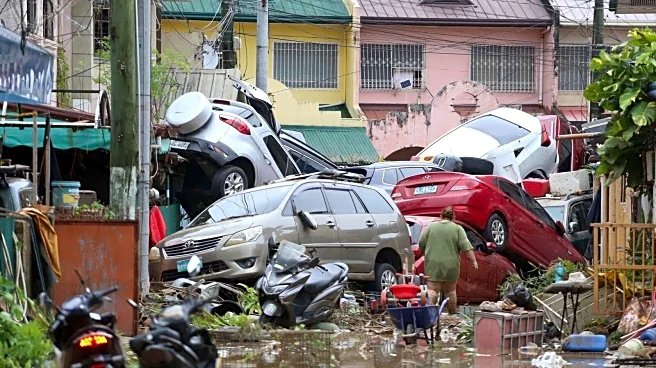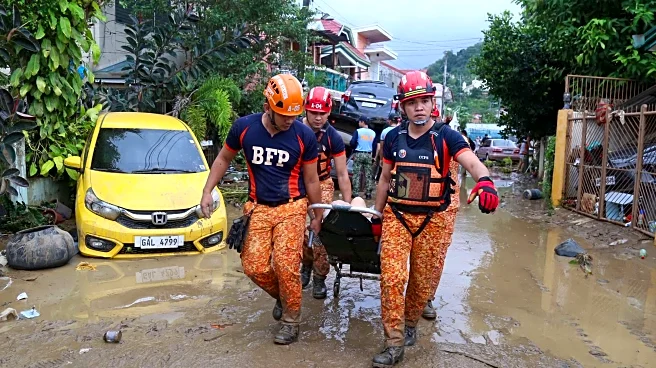What's Happening?
Typhoon Kalmaegi has resulted in the deaths of at least 26 individuals in the Philippines, primarily due to flooding. The storm, which swept across the central part of the country, trapped many people
on rooftops and submerged vehicles. Disaster response officials reported that the typhoon made landfall with sustained winds of 130 kph and gusts up to 180 kph. Prior to the storm's arrival, over 387,000 people evacuated to safer areas in anticipation of torrential rains, destructive winds, and storm surges reaching nearly 10 feet. Additionally, a Philippine air force helicopter crashed while en route to provide humanitarian assistance, with efforts underway to locate the personnel aboard.
Why It's Important?
The impact of Typhoon Kalmaegi underscores the vulnerability of the Philippines to natural disasters, as the country experiences approximately 20 typhoons annually. The severe flooding and destruction caused by the storm highlight the ongoing challenges in disaster preparedness and response. The typhoon's aftermath may strain local resources and necessitate international aid to support recovery efforts. The incident also raises concerns about infrastructure resilience and the need for improved evacuation and emergency response strategies to mitigate future risks.
What's Next?
As Typhoon Kalmaegi moves away from the Philippines, efforts will focus on rescue operations and providing aid to affected communities. Authorities will likely assess the damage and begin recovery and rebuilding efforts. The government may also review and enhance disaster preparedness measures to better handle future typhoons. International aid organizations could play a role in supporting relief efforts, while local communities work to restore normalcy and address the immediate needs of displaced residents.
Beyond the Headlines
The recurring nature of such disasters in the Philippines highlights broader issues related to climate change and environmental sustainability. The increasing frequency and intensity of storms may prompt discussions on global climate policies and the need for international cooperation to address these challenges. Additionally, the cultural resilience of affected communities will be tested as they navigate recovery and rebuilding processes, potentially influencing long-term social and economic dynamics in the region.












